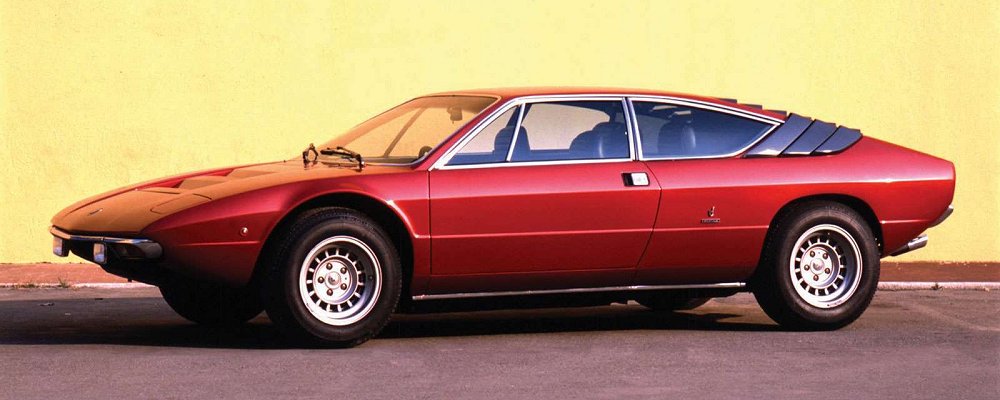Description
The Lamborghini Urraco P 300, introduced in 1974, represented the most mature and accomplished version of Lamborghini’s mid-engined V8 grand tourer. It was the final evolution of the Urraco project, building upon the foundations laid by the earlier P 250 and P 200 models with improved engineering, more power, and greater refinement. Where the P 250 had been Lamborghini’s daring experiment in compact performance, the P 300 was its perfection—a car that delivered sharper handling, stronger acceleration, and a level of balance that finally fulfilled Ferruccio Lamborghini’s vision of an accessible yet truly world-class sports car.
By the time the P 300 arrived, Lamborghini was in a difficult position. The early 1970s oil crisis had shaken the market for high-performance cars, and Ferruccio himself had sold his controlling interest in the company. Yet under the technical leadership of Paolo Stanzani, development continued on refining the Urraco platform. The P 300 was the result of this persistence, a car that addressed the mechanical shortcomings of its predecessors while unlocking the full potential of the design that Marcello Gandini and Bertone had created.
At the heart of the Urraco P 300 was a newly developed 3.0-litre version of Lamborghini’s all-aluminium V8 engine. Enlarged to 2,996 cc, it retained the same 90-degree layout and single overhead camshafts per cylinder bank but featured a higher compression ratio and revised cylinder heads. Fed by four twin-choke Weber carburetors, it produced 250 horsepower at 7,500 rpm and 265 Nm of torque. Power was transmitted through a five-speed manual gearbox to the rear wheels, giving the P 300 a top speed of around 250 km/h (155 mph) and a 0–100 km/h (62 mph) time of just over six seconds. The new engine transformed the Urraco’s character—smoother, more elastic, and capable of sustained high-rev performance that matched the expectations of a true Lamborghini.
The chassis of the P 300 was an evolution of the semi-monocoque steel structure used in earlier versions but with critical reinforcements that improved rigidity and weight distribution. The car retained fully independent suspension with MacPherson struts at both ends, but spring and damper rates were carefully revised to provide sharper response without sacrificing ride comfort. Four ventilated disc brakes and a more direct rack-and-pinion steering system ensured precise control, while the wider rear tyres improved traction and balance. The result was a car that handled with real finesse—nimble, predictable, and stable even when pushed to its limits.
Marcello Gandini’s body design remained largely unchanged, and the P 300 preserved the Urraco’s clean, wedge-shaped lines that perfectly captured the spirit of 1970s Italian design. The car’s proportions—compact, wide, and low—gave it an assertive stance that was both elegant and purposeful. Subtle updates distinguished the P 300 from the earlier P 250: the bumpers were now integrated more smoothly into the bodywork, the grille and taillights were revised for a cleaner appearance, and the rear deck featured improved ventilation for the more powerful engine. The car’s angular silhouette, large glass areas, and distinctive rear louvres created a look that was both timeless and unmistakably Lamborghini.
Inside, the P 300 offered a cabin that balanced sportiness with comfort. The 2+2 layout remained, but materials and ergonomics were refined. The seats were reshaped for better support, the dashboard gained clearer instrumentation, and overall build quality improved. The large, deeply set dials and aircraft-style switches reflected Lamborghini’s signature cockpit-like design philosophy, while improved sound insulation made the car quieter and more comfortable at high cruising speeds. Air conditioning and electric windows were offered, underscoring the car’s grand touring intentions.
Driving the Urraco P 300 revealed the full depth of Lamborghini’s engineering progress. The 3.0-litre V8 was lively and flexible, delivering power in a smooth, linear surge that made the car both thrilling and approachable. The gearbox had a precise, mechanical feel, while the clutch and steering were lighter and more progressive than in the earlier models. On winding roads, the P 300 felt agile and balanced, with its mid-engine layout providing excellent poise through fast corners. At higher speeds, the car was stable and composed, capable of long-distance touring at a pace few rivals could match.
Production of the Urraco P 300 was limited—fewer than 200 examples were built between 1974 and 1979. Although the car received critical praise for its improved refinement and handling, its commercial success was hampered by Lamborghini’s financial difficulties and the increasingly competitive sports car market. Nevertheless, the P 300’s engineering achievements laid the foundation for Lamborghini’s later V8 models, the Silhouette and Jalpa, both of which directly evolved from its chassis and powertrain design.
In retrospect, the Urraco P 300 stands as one of the most underrated cars in Lamborghini’s history. It combined the purity of Gandini’s design with genuine technical sophistication, offering a driving experience that was engaging, precise, and rewarding. It represented the moment when Lamborghini’s smaller model line reached its full maturity—a car that captured the essence of the brand in a more compact and usable form.
Today, the Urraco P 300 is admired for its blend of elegance, rarity, and innovation. Its crisp styling, rev-hungry V8, and balanced handling make it a jewel of 1970s automotive engineering, embodying Lamborghini’s determination to innovate even during challenging times. It was the car that proved Lamborghini could master both ends of the performance spectrum: the wild theatre of the Countach and the quiet precision of the Urraco P 300, a car that continues to reward those who understand its brilliance.
